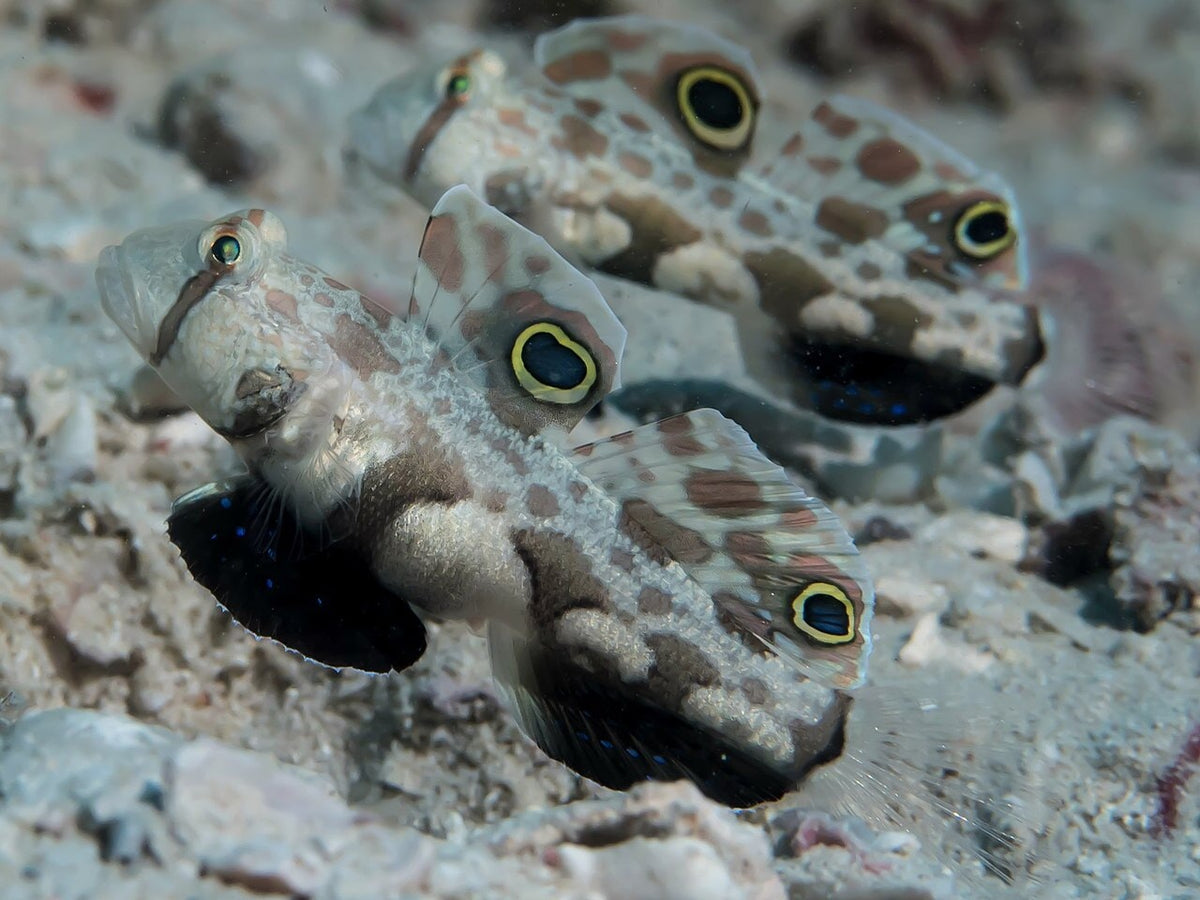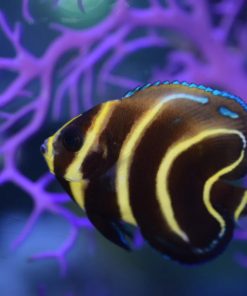Twin Spot Goby (Signigobius Biocellatus) Aquarium Industries
$ 70,00 $ 35,00
The signal goby (Signigobius biocellatus), aka the twin-spot, two-spot, or crab-eye goby, is an appealing little sand sifter with fascinating behavior that, unfortunately, often adapts very poorly to aquarium life. Nonetheless, specimens still appear in the aquarium trade, so it’s worth discussing the species here—if only to understand why it’s probably best to pass it by if you should happen to come across one at your LFS.
Physical traits
S. biocellatus has a torpedo-like body shape, high-set, bulbous eyes, a comically frowning mouth, and two prominent dorsal fins. In coloration, it’s grayish overall with orange-brown mottling. Each dorsal fin features a large, distinct eyespot, and the pelvic and anal fins are black with blue dots. The maximum size of this goby is around 4 inches.
A crabby mimic
When you view this fish in profile as it hovers just above the substrate, the twin eyespots create the impression that you’re looking at a crab scuttling sideways along the ocean floor, which might give would-be predators pause. Also, the goby’s mottled coloration obscures its shape to a dramatic degree when set against a natural substrate.
Feeding
It’s this area in particular that gives this species such a bad reputation in terms of captive survival. S. biocellatus feeds by scooping up mouthfuls of sand, sifting out tiny invertebrates, and expelling the sand from its gills. The trouble is, most aquarium systems don’t have an adequate population of interstitial invertebrates to sustain this fish long term, so most captive specimens end up starving to death. Target feeding with small meaty food items can help in some cases, but not all specimens will accept such offerings.

Housing
I’ve seen minimum-tank-size recommendations as low as 20 gallons for this species, but if I were to attempt to keep it (which, admittedly, I probably wouldn’t), I would opt for a much larger tank dedicated to the goby with a deep and expansive bed of live sand and possibly a connected refugium.
Compatibility
S. biocellatus is a peaceful species, and any piscine tankmates should be equally passive as well as disinclined to compete for the same foods. While conspecifics may squabble, mated pairs can be kept together. In fact, keeping them in pairs—the way they’re usually found in nature—is often cited in aquarium literature as the preferred arrangement versus keeping lone specimens.
This goby won’t intentionally harass corals and other sessile invertebrates, so it’s generally considered reef-safe. However, its sand-sifting activity may subject the tissues of any invertebrates situated on the substrate to regular “sandstorms.”
| Style | Singles, PAIR |
|---|
Fast Shipping and Professional Packaging
Because of our long-standing relationship with UPS FedEx DHL as well as other leading global carriers, we can offer a variety shipping options. Our warehouse staff is highly skilled and will wrap your goods in accordance with our exact and precise specifications. Your goods will go through a thorough inspection and be adequately secured before being shipped. We ship to thousands customers every day from all over the world. This demonstrates our dedication to become the biggest online retailer in the world. Both Europe as well as the USA have distribution and warehouse centers.
Note that orders containing more than one item are processed according to the particular item.
Before shipping, we will inspect the ordered items thoroughly. Today, the majority of orders will be delivered within 48 hours. The delivery time is estimated to be between three and seven days.
Returns
Due to the multiple parties involved, including the factory and the warehouse, we're unable to completely manage our stock. Therefore, the actual inventory could change at any time. It's possible that the stock may run out after your order has been processed.
Our policy is for 30 days. If you don't receive your product within 30 days, we are not able to issue a refund or an exchange.
Your item should be in its original packaging and in good condition. It must also not be used. The item must be returned in the original packaging.
Related products
Marine Fish
Marine Fish
Marine Fish
Marine Fish
Marine Fish
Marine Fish
Marine Fish
Marine Fish
Marine Fish
Marine Fish
Marine Fish
Marine Fish
Marine Fish

















































